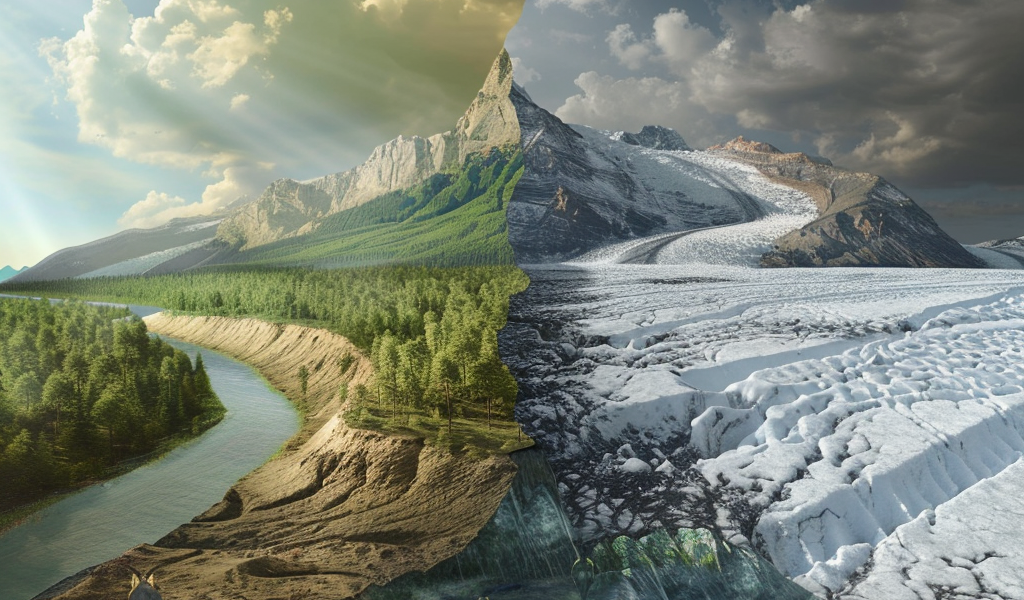Stanford Research Reveals Puzzling Sediment Absence During Eocene-Oligocene Climate Transition
Recent research from Stanford University has unveiled significant insights into a crucial climate transition that occurred approximately 34 million years ago, known as the Eocene-Oligocene transition. This period is marked by a dramatic shift from a warm, greenhouse climate to a much cooler icehouse state, leading to profound changes in Earth’s climate and ecosystems.
The Eocene-Oligocene transition is recognized as one of the most significant climate shifts since the extinction of the dinosaurs. During this time, large ice sheets began to form in Antarctica, a region that had previously been devoid of ice, and global sea levels experienced a sharp decline. This transition not only altered the climate but also resulted in substantial die-offs among various marine and terrestrial species.
According to established climate models, this cooling event should have led to extensive erosion across the continents, depositing vast amounts of sandy sediments onto the ocean floor. However, a surprising new review published in Earth-Science Reviews reveals a puzzling discrepancy: researchers found little to no sediment from this period at the margins of all seven continents. This unexpected finding raises questions about the processes of sediment deposition and erosion during this critical period in Earth’s history.
Senior author Stephan Graham, a professor at the Stanford Doerr School of Sustainability, expressed the research team’s bewilderment at the absence of sediment, stating, “The results have left us wondering, ‘where did all the sediment go?’” He emphasized that understanding this gap in the geological record is essential for gaining a deeper insight into how sedimentary systems operate and how climatic changes are recorded in deep marine sediments.
This discovery challenges long-standing models of sediment dynamics and offers new perspectives on the global environmental impacts of significant climate shifts. The researchers believe that these findings could also illuminate how contemporary rapid climate change might affect Earth’s surface in the future.
Lead author Zack Burton, now an assistant professor of Earth sciences at Montana State University, noted, “For the first time, we’ve taken a global look at an understudied response of the planet’s largest sediment mass-movement systems during the extreme transition of the Eocene-Oligocene.” This approach allowed the team to analyze the effects of climate change on sedimentary processes on a broader scale.
Initially, Burton and his colleagues sought to explore the implications of warm conditions earlier in the Eocene on deep-sea depositional systems. Their previous research, published in Nature Scientific Reports in 2023, indicated the presence of abundant sand-rich deposits along continental margins, which they attributed to intensified weather patterns that increased erosion rates from land.
However, the current study’s focus shifted to the later Eocene and early Oligocene periods, during which Earth underwent rapid cooling. The absence of expected sediment deposits during this cooler climate phase poses significant questions for researchers. The team is now tasked with unraveling the complexities of sediment movement and deposition during this time.
Understanding sediment dynamics during the Eocene-Oligocene transition could provide vital clues about the Earth’s climatic history and its response to current and future climate changes. As the planet faces unprecedented warming, insights gleaned from past climate events may help predict how sedimentary systems will react to ongoing environmental shifts.
The research underscores the importance of comprehensive geological studies to fill gaps in our understanding of Earth’s climatic and environmental history. By investigating periods of significant climate change, scientists can better comprehend the intricate relationships between climate, sedimentation, and the broader implications for ecosystems and the planet as a whole.
As researchers continue to analyze the geological record, they hope to uncover more about the sedimentary processes that shaped our planet during past climate transitions. These findings not only enrich our understanding of Earth’s history but also inform discussions about the potential impacts of current climate change on sediment dynamics and the environment.





